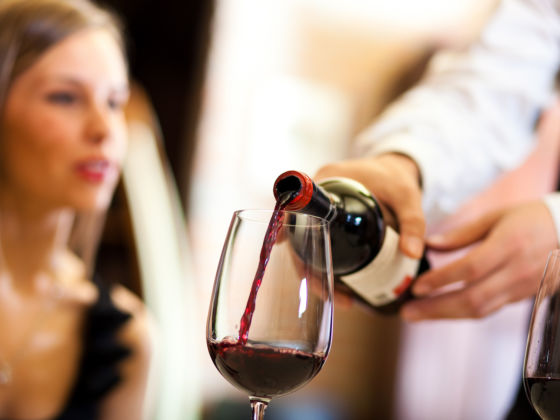Wine menus can be daunting tomes filled with names you can’t pronounce and regions you couldn’t place on a map. It doesn’t matter which city or country you’re dining out in, the anxiety induced by an imposing wine menu is universal. Thankfully, the proper way to understand one is just as sweeping. Regardless of where you’re dining, keep regionality in mind.

The Secret to Decoding Wine Menus Has More to Do With Travel Than You Think
“I definitely look for a wine that is specifically from the area that I am in — the more specific the better,” says Fabien Piccoli, sommelier at Brooklyn’s Antica Pesa. “You want to find the indigenous little gems that you will not find anywhere else.”
It’s not always an option to drink wine from the same region you’re in, however. That’s when a different take on regionality comes in handy.
There’s an old (and, to be honest, overused) maxim about ordering regional wine: “What grows together, goes together,” meaning the wine to order off a menu should come from the same place your food comes from. A dish filled with truffles from Tuscany, for example, goes with a sangiovese-based Tuscan wine. The saying is repeated often for a reason, though. For the most part, it works to whittle down a restaurant wine menu.
It can be a little more complicated if you’re at a wine bar and there solely for the wine. Still, the best method is to look at a wine menu like you’d look at a list of where in the world you want to travel. The wine world is, in the broadest sense, divided between Old World (traditional wine countries in Europe like France, Italy, and Spain) and New World (everywhere else). Each continent, country, and region has a specialty, and wine bars often have a focus on a particular area. A regional focus is a good sign the beverage director has found choice picks and knows the area inside and out. If a menu has a full page in the three-page menu devoted to Rioja, there’s a good chance even the cheaper bottles will satisfy.
Don’t be thrown off if you come across a region you’re not familiar with, though you wouldn’t be alone. A 2018 study from researchers at Washington State University found that “issues like a wine’s country and region of origin sometimes had more impact on a person’s willingness to pay more for a wine than taste.” The brand value of a region is often well-earned (take the classic Napa wineries, for example), but you’ll find bottles that are just as good for a better value in places where people aren’t making wine shows. So go ahead and order that bottle of Israeli wine or take the plunge on that red from Eastern Europe.
“I would say each region has at least a few wines you can easily find that are under the radar and affordable,” Piccoli says.
Once you’ve assessed the regions on the menu, there are a few further tips to make sure you enjoy that glass (or bottle) you order.
Ask the sommelier.
You should always ask the sommelier or whoever is working the bar for suggestions. Tell them your price range, whether you’re looking for something new or comfortable, and the wines you typically like to drink. They know the menu better than you do and have likely tried the wines.
“If you are not a wine connoisseur, you should definitely feel comfortable asking the sommelier about the little hidden gems on a wine menu,” Piccoli says. “They’ll be excited to show you!”
Ignore the “second cheapest bottle” myth.
Over the past couple of decades, popular belief held that people should order the second cheapest bottle of wine on the menu. It looks less cheap than ordering the lowest priced bottle, the reasoning holds. But it’s also a bogus way to find something you like. Instead, order based on a price range (and be honest with yourself and the sommelier as to what that range is).
“The quality of the wine is not always determined by its price, so you should not consider wines with lower prices as inferior quality,” Piccoli says.
In some cases, a beverage director or sommelier may put a lower markup on a lesser-known wine they truly love, while wines from regions with a reputation for quality can also sometimes see a higher markup.
Look for organic and biodynamic.
“Another indicator of quality can be when a wine is organic or biodynamic,” Piccoli says. “That means the wine was made with particular care and passion, trying to preserve the terroir and the environment. You can also look at the description, which may mention that the wine is coming from a small winery with low production, but high quality.”
The person serving wine will likely be more than happy to tell you the provenance and production methods of a bottle you’re interested in. If you don’t want to look like that person because of your drinking companions or some other reason, take advantage of the technology we have at our fingertips and Google the wine.